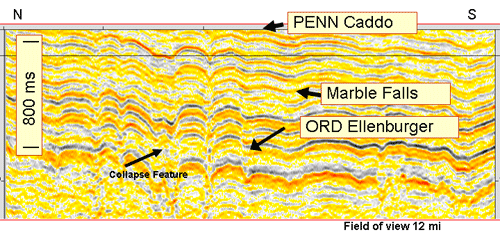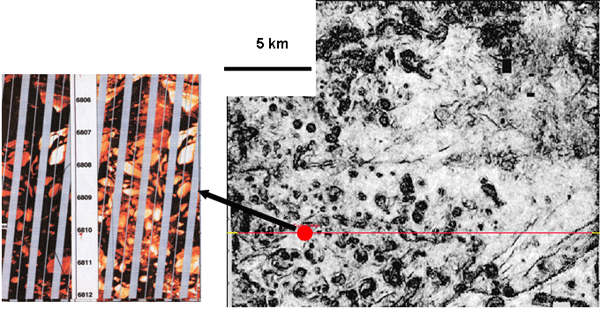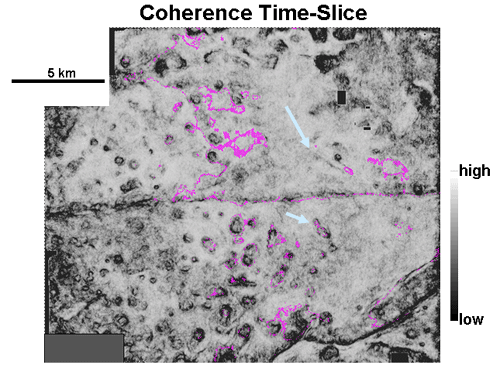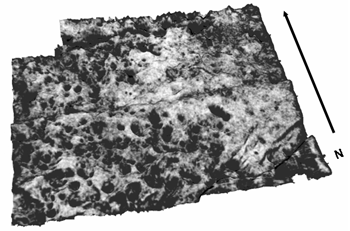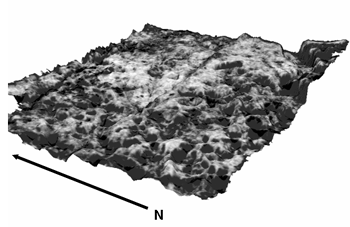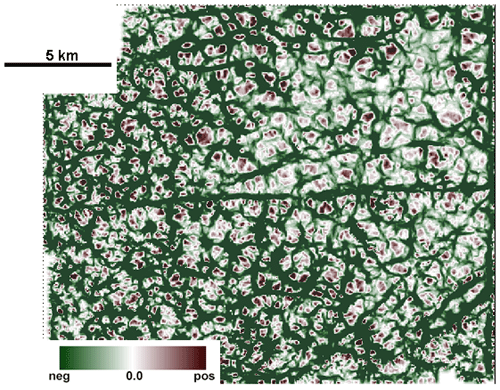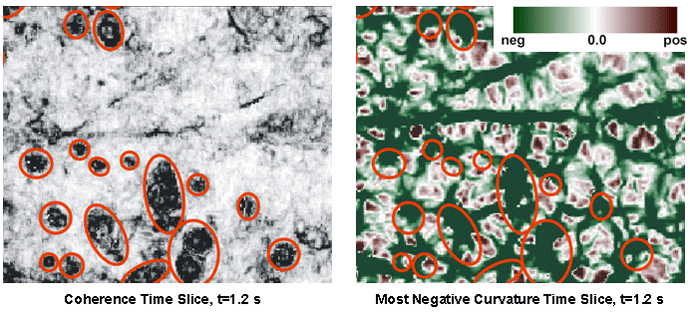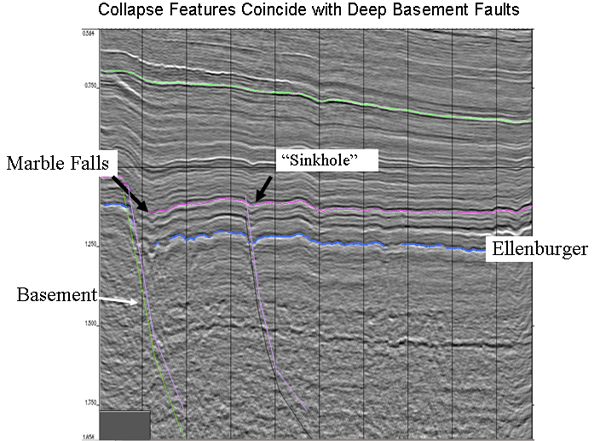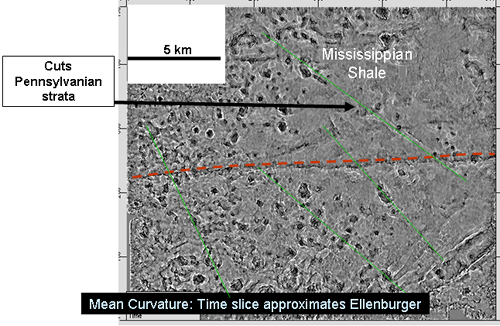
|
|||||||||
Karst FeaturesCollapse Features and Polygonal FeaturesFort Worth Basin EllenburgerSubaerial karst versus tectonic pull-apart features.
The Paleozoic section in parts of the Fort Worth Basin, north Texas, exhibits collapse features that persist vertically some 2300’ (700m or 800ms) (Figures 1, 2 and 3). These features have characteristics of both subaerial weathering processes, and structural deformation. Circular sinkhole-like features form cockpit geomorphology on the surface of the Ordovician Ellenburger horizon (Figure 4 and 5), and occur at the intersection of curvature lineaments (Figure 6). Many of these lineaments are basement related (Figure 7), and many of the collapse features occur along Pennsylvanian age fractures and small faults (Figure 8 ). In addition, dolomite and native copper cements in filled fractures indicate flow of hot burial fluids.
Figure 1
Figure 3. Coherence time-slice near top Marble Falls: Collapse features are present, but no known record of subaerial karst formation.
Figure 5. Most negative curvature time slice near Ellenburger, showing polygonal geometry.
Figure 6. Collapse features on coherence line up with intersection of curvature lineaments. Field of view approximately 8km.
Figure 7
Figure 8. ELBG Collapse Features (black features) along PENN Lineaments (green and red lines).
|
|||||||||
